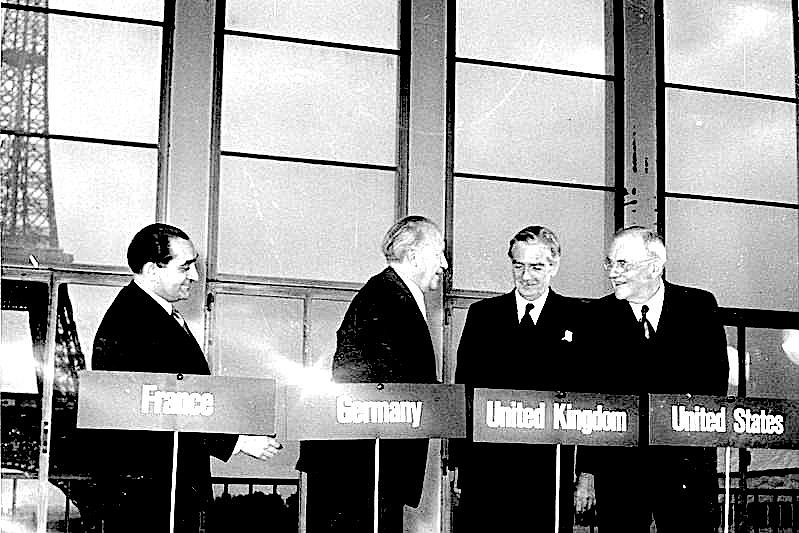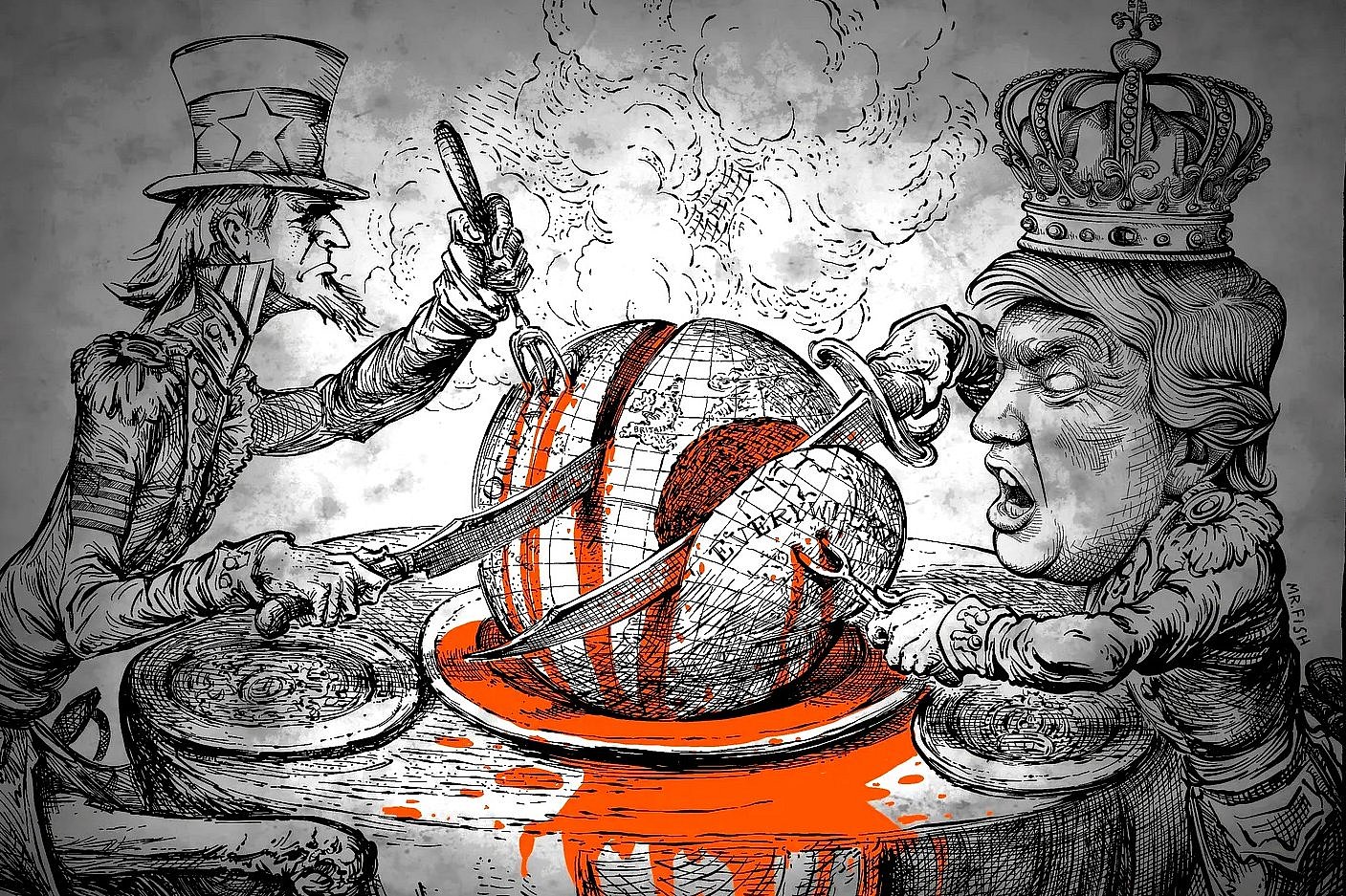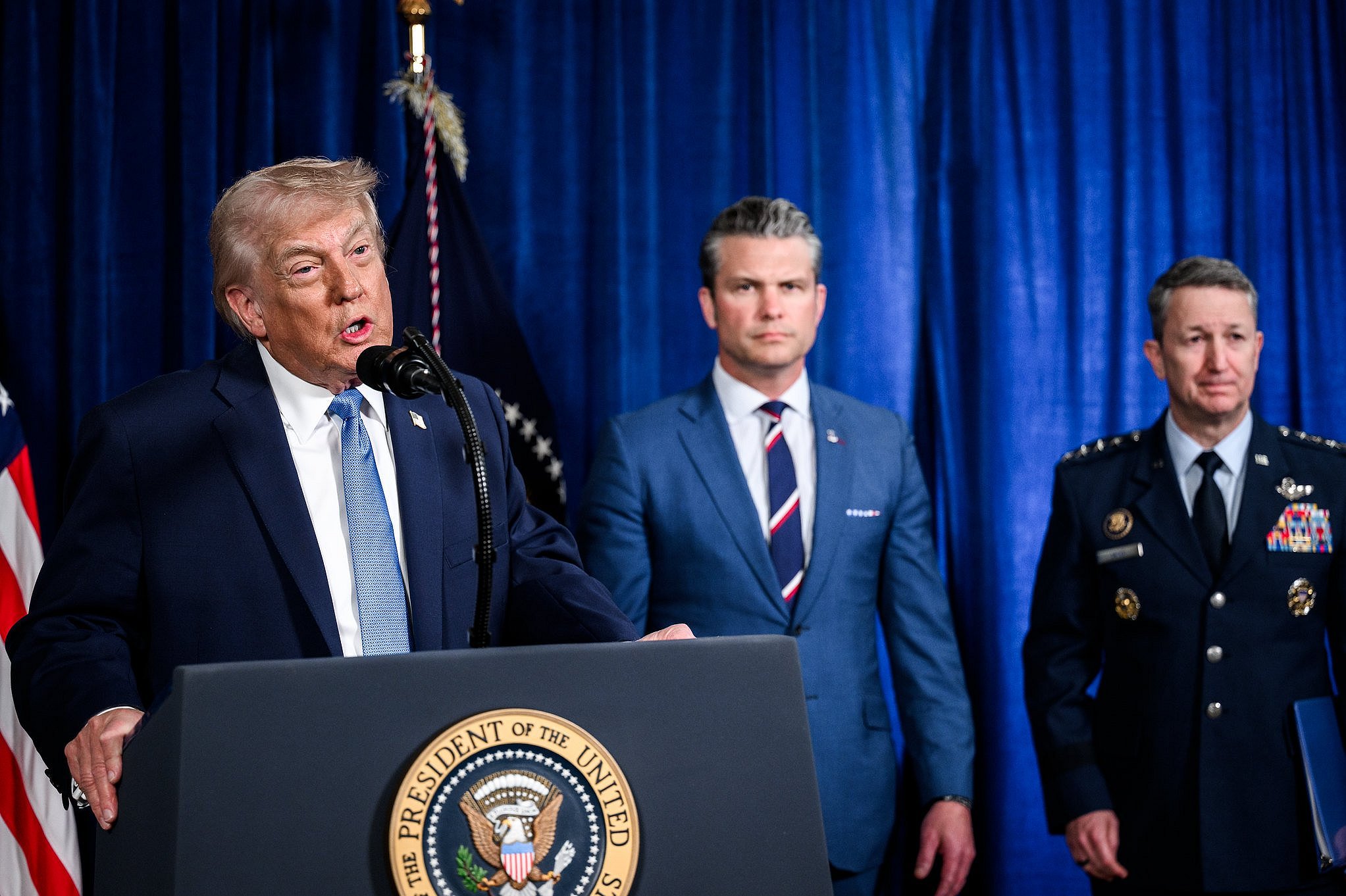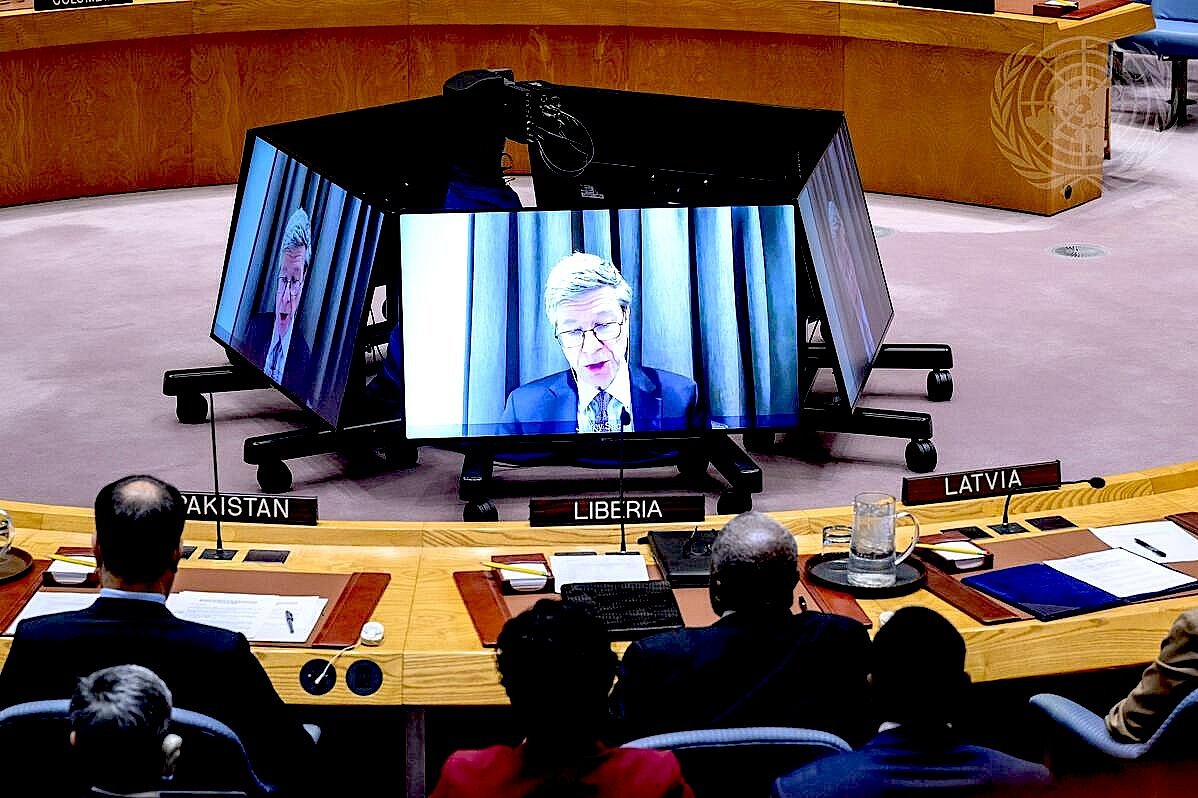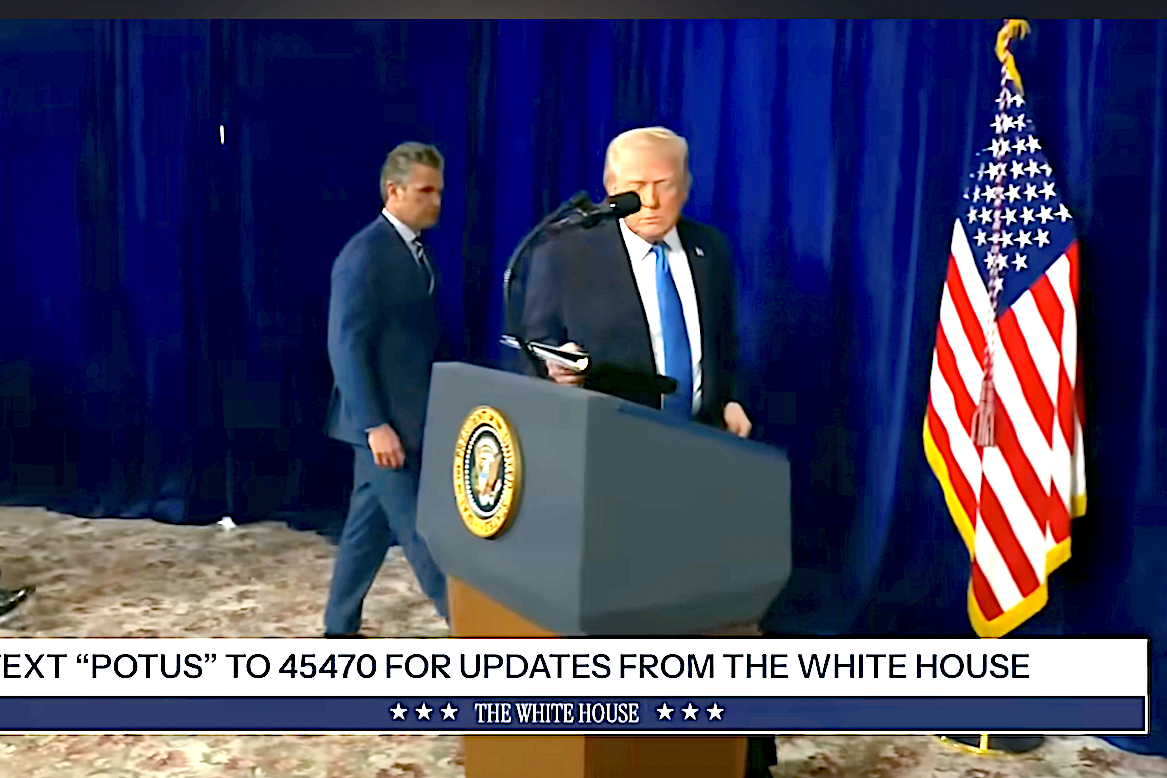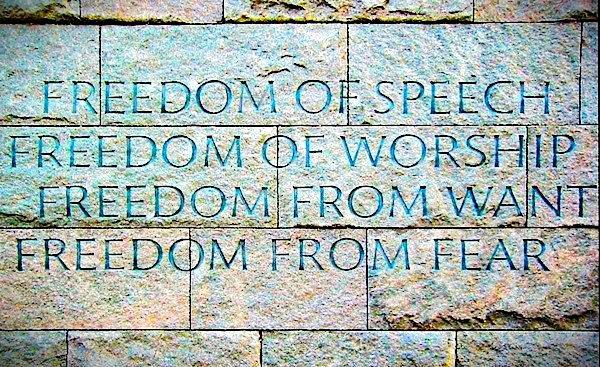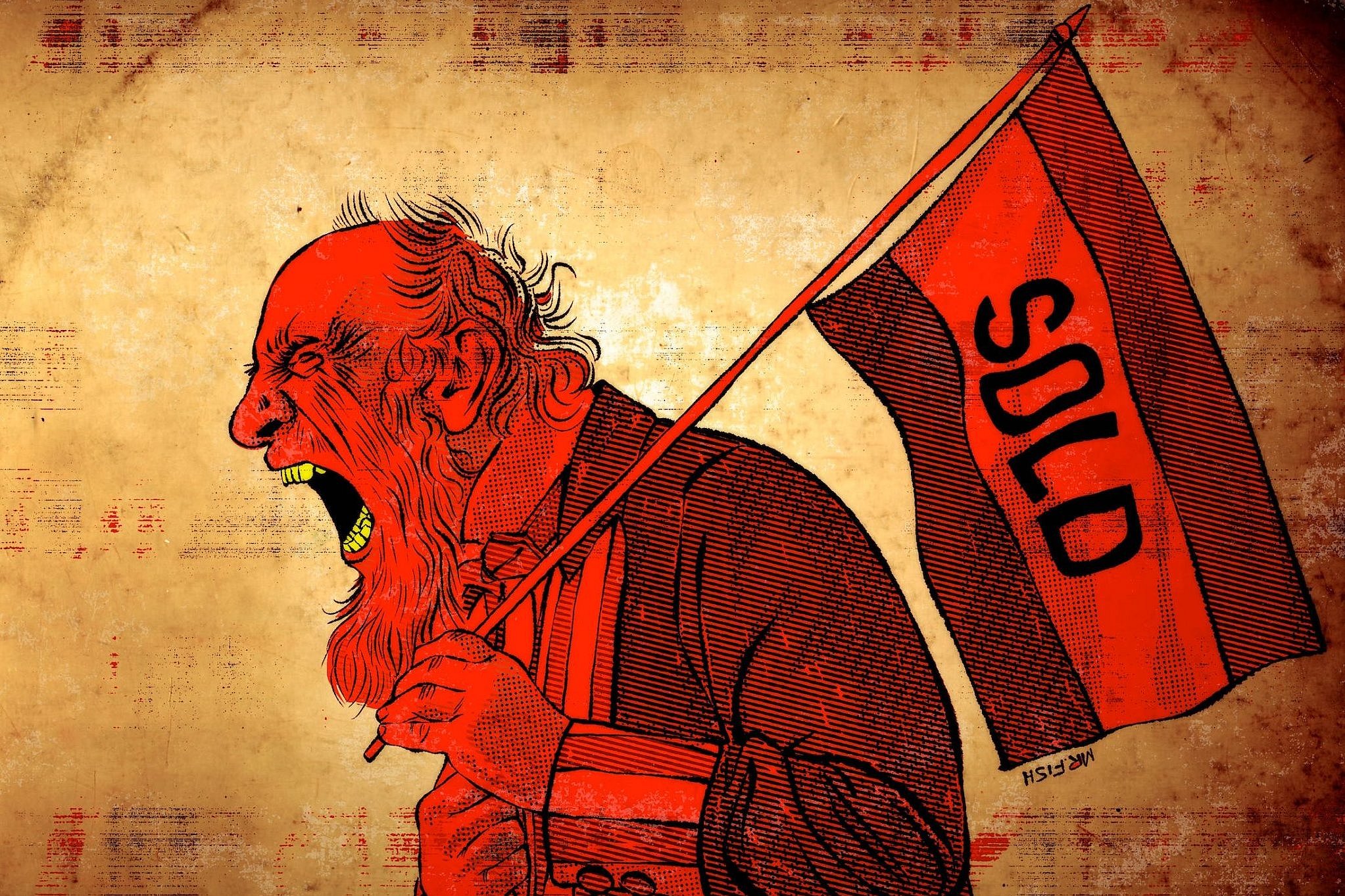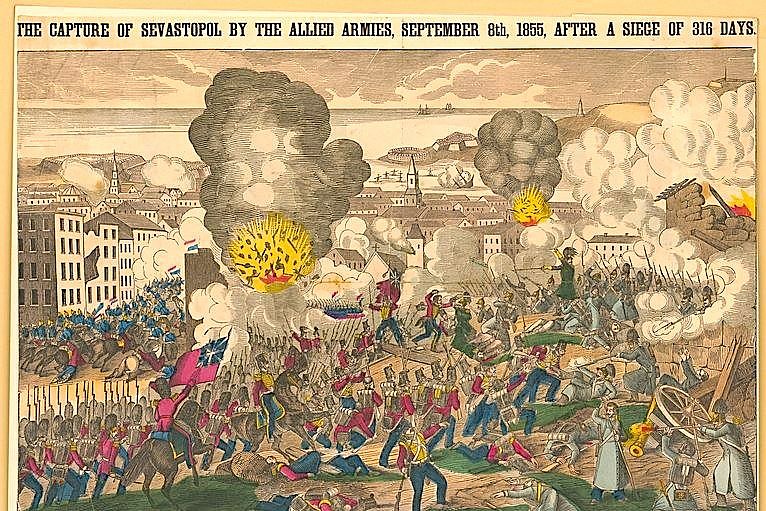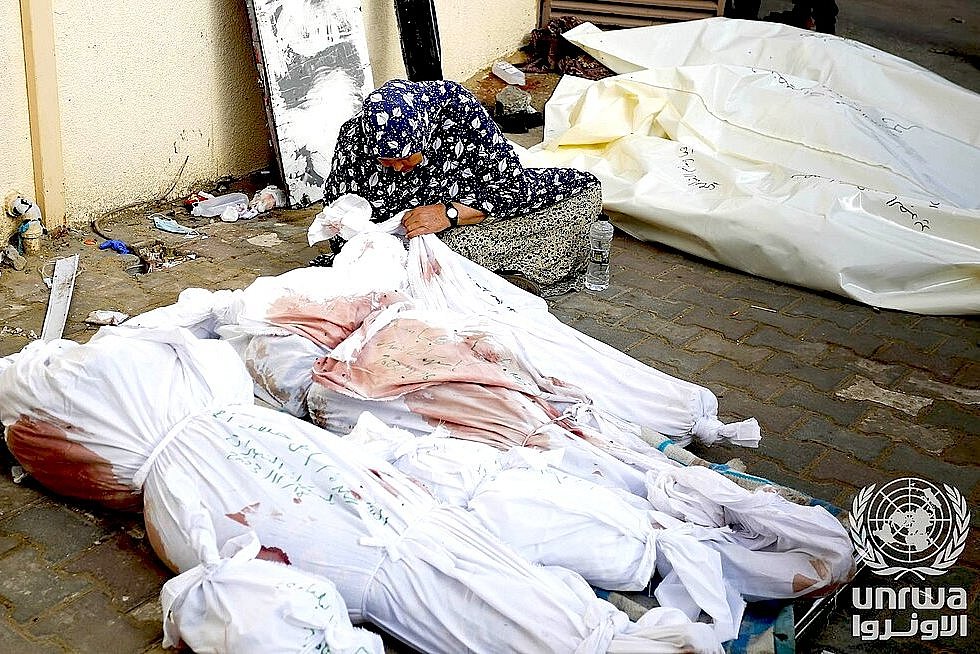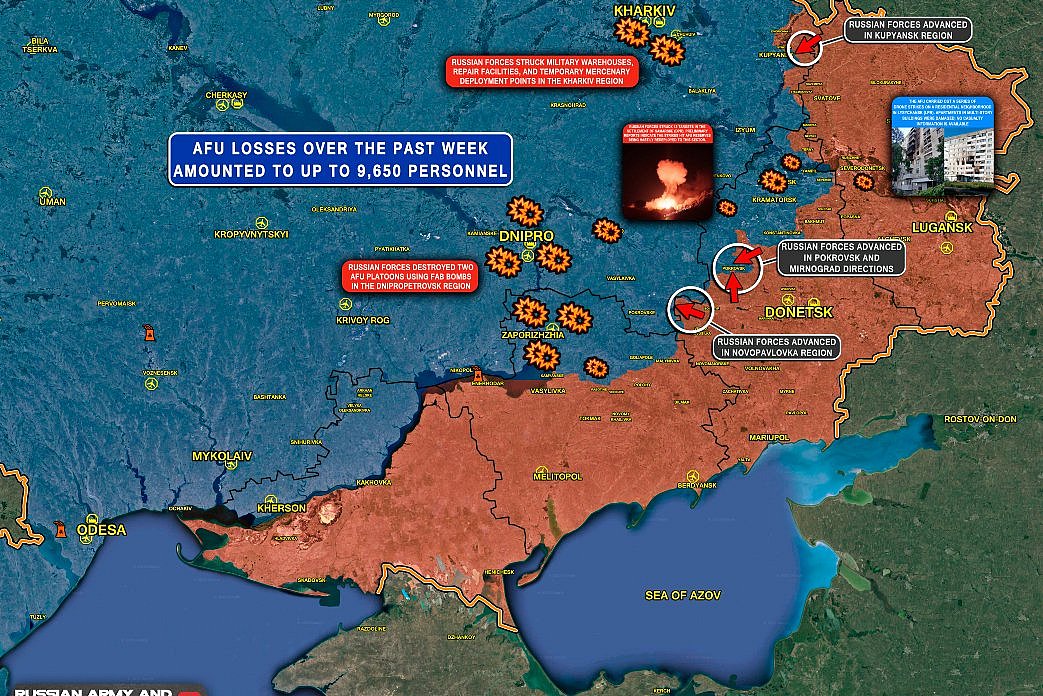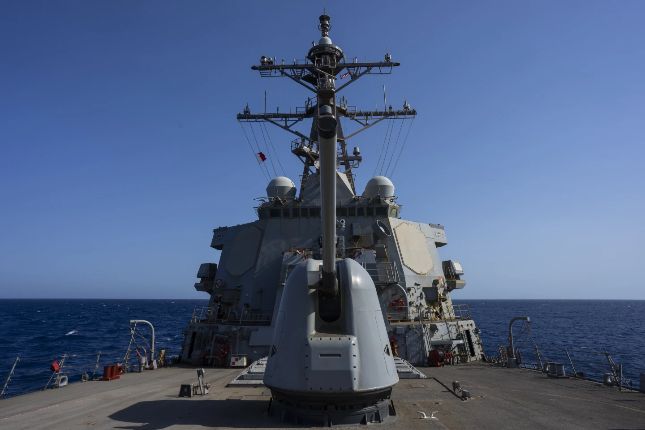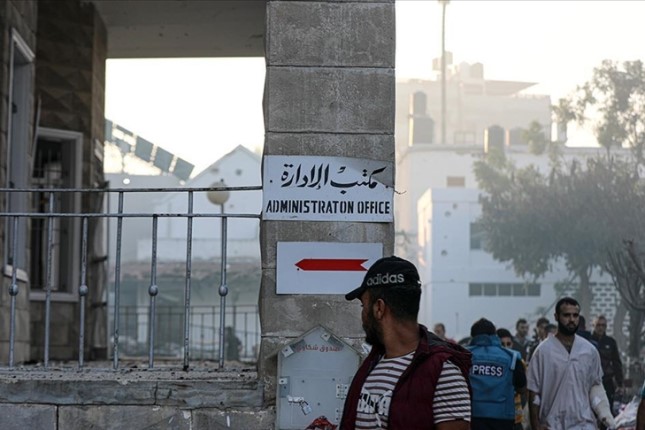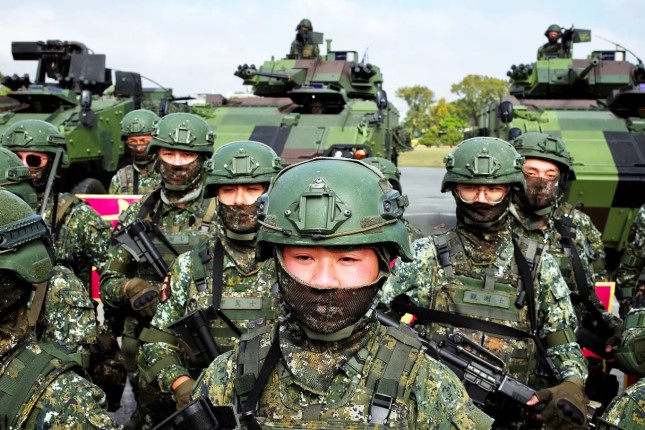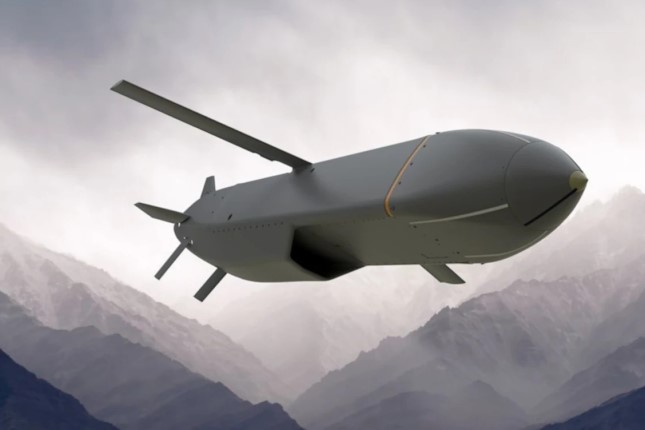After the end of the Second World War, Germany was divided into four occupation zones, involving U.S., British and French troops in what was known as the western zone of occupation and Russian troops in the eastern zone of occupation.
In 1949, confronted by the collapse of the wartime grand alliance and the emergence of what Winston Churchill called an “iron curtain” separating the Western powers from Russia, the western zones of occupation were consolidated into what became known as the Federal Republic of Germany, or West Germany.
Under the terms of its unconditional surrender, Germany was prohibited from rearming. However, the NATO alliance, in the aftermath of the Korean conflict, perceived a Soviet threat in Europe which could not be countered with the military capability existent in Europe sans Germany.
While the idea of the rearming of West Germany, inclusive of rebuilding Germany’s military industrial potential, was widely opposed both in and out of West Germany, in the end the wants and desires of the NATO militarists prevailed and May 6, 1955 — literally a decade after the defeat of Nazi Germany — West Germany was admitted as a member of the alliance.
NATO histories like to emphasize how West Germany began its journey of re-militarization with “literally zero military personnel.”
This is, of course, absurd.
West Germany was home to millions of demobilized former soldiers of the Third Reich.
These soldiers were men without a place in West German society, disgraced by their participation in Hitler’s wars of conquest and the underlying policies of racial discrimination and murder these wars empowered.
But like the good militarists they were, these defeated minions of the Third Reich weren’t satisfied with simply being allowed to escape the gallows or prison.
They yearned to become relevant to their society.
To regain their lost “honor”.
And to resume their wartime mission of facing off against the Soviet enemy.
In 1950 — five years after the defeat of Nazi Germany — a group of former senior Nazi officers gathered in secret at the Himmerod Abbey, a 12th century monastery located in the Rhineland-Palatinate region of West Germany, to chart a path toward the rehabilitation and resurrection of the German military.
They met with the approval of the new West German government.
The central theme of the Himmerod gathering, as set forth in an eponymously named memorandum, was the restoration of the honor of the defeated Nazi army. The former Nazi officers believed that they could not build a new German military on a foundation of shame. As such, they insisted that before the rearmament of West Germany could proceed, the Western allies would need to release all German soldiers who had been convicted of war crimes.
Moreover, they demanded that the defamation of the Nazi soldiers, including those who served in the Waffen-SS, cease. All of this would be done under the cloak of a concerted public relations effort in the West to end the war-time prejudices that had accrued against the German soldier and to delink the performance of the Nazi military during the war from the issue of “war crimes.”
Collective Amnesia
The Western allies were overcome with collective amnesia about the true nature of the enemy they had vanquished a mere five years prior. “To achieve the extirpation of Nazi tyranny,” Winston Churchill had famously declared, “there are no lengths of violence to which we will not go.”
“God, I hate the Germans,” General Dwight David Eisenhower wrote in a letter to his wife in September 1944. Eisenhower didn’t just hate the German soldier — he hated the German people. Eisenhower, if he had his way, would have executed the entire German General Staff. It was his objective to kill as many German soldiers as possible.
As the war approached its end, Eisenhower ordered that captured German soldiers be designated “Disarmed Enemy Forces” and in doing so ensured millions of German soldiers who surrendered would not be afforded the protections and rights of prisoners of war. In the months after the war ended, more than 1.7 million German soldiers died in the custody of the United States, treated as animals by a military that viewed them with disdain and hatred. [NOTE: The figure of 1.7 million comes from Canadian writer James Bacque, whose claim has been challenged by mainstream historians.]
And yet, soon after the Himmerod Agreement was finished, Eisenhower, who was by this time serving as the supreme allied commander in Europe, having been briefed on the agreement by the Nazi officers who had drafted it, issued a declaration in which he noted,
“I have come to know that there was a real difference between the German soldier and Hitler and his criminal group…for my part, I do not believe that the German soldier as such has lost his honor.”
Eisenhower then directed that U.S. Army historians begin working hand in glove with their former Nazi foes to whitewash the history of the German Army in World War II, helping create the myth of the “clean Wehrmacht,” a prerequisite for Americans and Germans to be able to stand side by side as allies against the Soviet threat.
This reshaped the West’s perception of the Nazi war effort and led to Wehrmacht’s eventual rehabilitation in the eyes of the public and the Allied authorities.
Churchill, too, apparently forgave those whom he deemed no amount of violence a burden to destroy. While declining health prompted Churchill to resign as prime minister in April 1955, he worked closely with Lord Ismay to ensure that Germany, far from being kept down, was allowed to stand again on its own two feet. [Churchill had wanted to use the defeated German army to fight the Soviets immediately after the war ended in Operation Unthinkable.]
Within a decade of being given the green light to reconstitute its military strength, the West German Army numbered more than 450,000 men. Moreover, German factories began production of the Leopard main battle tank that same year — a tank whose design and performance drew directly upon Germany’s experiences during World War II.
The rehabilitation of the former Nazi officers and soldiers led to German officers rising to command NATO forces. By 1957, one of the principal architects of the Himmerod Agreement, General Hans Speidel, was put in command of NATO ground forces in the center of West Germany.
General Hans Speidel
Speidel was an attractive candidate for the position; the former Chief of Staff of Field Marchall Erwin Rommell, Speidel was implicated in the plot to assassinate Adolf Hitler on July 20, 1944. He was later arrested and interrogated. Marked for death, Speidel escaped custody near the end of the war, and turned himself in to allied authorities.
A career military man, Speidel joined the Imperial German Army in 1914, where he served with distinction on the western front, fighting in the battle of the Somme. He was one of the 100,000 German soldiers who remained in the German Army in the interwar years and played an important role in the rebuilding of the German military into the force used by Hitler in his drive to conquer Europe.
Speidel participated in the invasion of France in 1940 and, following the surrender of the French in June 1940, Speidel was appointed as the chief of staff of the military commander in France, during which time he was involved in organizing and facilitating mass executions and deportations of Jewish and Communist hostages as reprisal for the actions of the French Resistance, as well as similar reprisal activities against civilians in Albania, Yugoslavia, and Greece.
In March 1942 Speidel was transferred to the eastern front, where he was appointed chief of staff of the V Army Corps in Russia. Part of the German 17th Army, Speidel and the V Corps protected the army’s northern flank during the German spring offensive.
In January 1943, at the height of the Stalingrad crisis, Speidel was temporarily assigned as chief of staff to the Italian Eighth Army and helped organize a failed effort to relieve the German 6th Army, which was surrounded in Stalingrad.
After Stalingrad fell, Speidel organized the staff of an ad hoc Army-sized formation known as Detachment Kempf. Speidel played a significant role in helping stabilize the German southeastern sector after the Soviet breakthrough at Stalingrad and then launch the German counterstroke at Kharkov that halted the Soviet advance in February 1943.
Speidel served as Detachment Kempf’s chief of staff during the Battle of Kursk and, after the battle ended in a German defeat, Speidel was promoted to major general and appointed as the chief of staff of the Eighth Army, which was formed from the formations that had been operating under Detachment Kempf. Speidel received the Knight’s Cross of the Iron Cross for his services in Russia — one of the highest military honors — and was promoted to the rank of lieutenant general in January 1944.
Speidel was transferred to France in April 1943, where he was made chief of staff for Field Marshall Erin Rommell, who was preparing to defend France from allied invasion. Speidel was heavily involved in planning and executing the German defense of Normandy.
Somewhere between his transfer to France and the invasion of Normandy, Speidel was contacted by disgruntled German officers who were plotting to kill Adolf Hitler and take over control of Germany.
Following the failed assassination attempt on Hitler, on July 20, 1944, Speidel — who had not been informed about the planned assassination — did attempt to persuade General Field Marshal von Kluge, who had taken over command in France after Rommell was wounded in an allied air attack, to implement certain pre-arranged measures that had been agreed upon in the event of Hitler’s death.
Speidel remained on duty with the Wehrmacht, involved with the defense of France. Speidel famously refused to obey Hitler’s order to destroy Paris before it fell to the allied forces in August 1944.
But his connectivity with the anti-Hitler plotters caught up with him, and Speidel was eventually arrested in September 1944 and subsequently interrogated, during which time he revealed the involvement of Field Marshall Rommel in the plot against Hitler, resulting in Rommell being compelled to commit suicide or else face execution.
Speidel himself avoided execution only by the narrowest of margins, escaping Gestapo custody in the final days of the war and successfully evading capture until taken into custody by French troops.
After the war Speidel, now a prisoner of the Americans, found himself and 11 other former Nazi officers before what was known as “Military Tribunal V.” The tribunal was convened on June 28, 1947, to try the defendants on four counts involving
“the murder of hundreds of thousands of civilians of Greece, Yugoslavia and Albania by troops of the German Armed Forces; participation in the plundering and looting of public and private property, the destruction of cities, towns, and villages, and other acts of devastation in Greece, Yugoslavia, and Albania by troops of the German Armed Forces; participation in the initiation and drafting of secret orders denying enemy troops quarter and denying them the rights of POWs, and orders commanding that surrendered troops of countries at war with Germany be executed; participation in the murder, torture, imprisonment in concentration camps, use for forced labor, and deportation for slave labor of civilians of Greece, Yugoslavia, and Albania by the German Armed Forces.”
Hans Speidel and seven of his co-defendants were found guilty, and Speidel himself was sentenced to a term of 20 years imprisonment.
Whitewashing the Wehrmacht
Shortly after the Second World War ended, William J. Donovan approached Franz Halder, the former chief of the General Staff of the Wehrmacht, and two former Wehrmacht field marshals, Walther von Brauchitsch and Eric von Manstein, to prepare a document which would outline a historical narrative which could be used to separate the Wehrmacht from the Nazi leadership of Germany.
Donovan, who served as a deputy prosecutor at Nuremberg, was the ringleader of a few other senior U.S. officials who believed that the military potential of Germany should be preserved and aligned with the Western allies to contain and confront the Soviet Union. These officials believed that the Nuremberg trials should not proceed.
Donovan asked Halder and the other German generals to prepare a document, which was titled “The German Army from 1920 to 1945,” which had as its purpose the whitewashing of the crimes committed by the Wehrmacht.
This document would be used to portray the German Wehrmacht as an apolitical institution of military professionals who were innocent of the crimes committed by their Nazi masters. The irony here is that Halder was one of the biggest war criminals of them all, having drafted both the Commissar Order (issued on June 6, 1941) and the Barbarossa Decree (signed on May 13, 1941) that allowed German soldiers to execute Soviet citizens free from the fear of prosecution.
Halder’s paper was later used by Hans Laternser, the lead counsel for the defense of senior Wehrmacht commanders at was known as the High Command Trial, the 12th and last of the Nuremberg trials.
Of the 13 German high-ranking officers on trial, 11 were found guilty of crimes and given sentences ranging from three years to life. But German Chancellor Konrad Adenauer and the Bundestag weighed in on the side of the defendants, citing the information contained in the Halder document.
In 1949, shortly after the High Command Trial concluded, President Harry Truman sent John McCloy, an influential American lawyer who had served as a senior defense official during the war, helping oversee among other things the Manhattan Project, to Germany to succeed General Lucius Clay as military governor.
The following year McCloy was appointed U.S. high commissioner. One of McCloy’s first acts was to convene a review panel chaired by Judge David Peck of New York and, on its recommendation, reduced the sentences of High Command defendants who were still in prison.
Hans Speidel was a beneficiary of the “McCloy touch” and never served a day in prison despite his conviction of numerous war crimes. As part of the whitewashing of the German war record that was taking place under the guidance of the U.S. Army, Speidel wrote a book, Invasion 1944, which was a history of the Normandy campaign as seen from the German perspective.
One critic of Speidel’s work wondered if General Speidel was not a little too impressed by the chivalry of many officers and a little too blind to their tolerance of Gestapo atrocities. But this didn’t stop Speidel from gifting a signed copy of his book to McCloy in 1951, after Judge Peck’s panel had cleared Speidel’s name and those of the other German Generals who had committed war crimes under Nazi rule.
When, in 1955, the allies decided to rearm West Germany, General Speidel was one of two Hitler-era generals invited to help plan the new army. Over five years, in a delicate process that was watched with resentment by many Europeans, he negotiated terms of West Germany’s military force in the framework of a European army.
The New German Army & the Schnez-Truppe
The core of the German soldiers recruited by Speidel into the new German Army were drawn from a secret military organization organized and overseen by Speidel and other former Nazi officers in 1949, known as the “Schnez-Truppe” (named after the brainchild of the effort, a former Wehrmacht colonel named Albert Schnez), comprised of some 2,000 former Nazi officers who were organized into battle staffs around which another 40,000 former Nazi soldiers would rally around if the Soviet Union were ever to invade West Germany.
This unofficial West German fighting force, organized to the company level and intended to function as four armored divisions, was intended to reinforce allied efforts to repel any attack by the Soviet Union or East Germany on West Germany.
In 1955, the “Schnez-Truupe” was renamed the Bundeswehr. And thus was born the German Fourth Reich, a direct descendant of Nazi Germany unencumbered with any cloak of guilt for the crimes committed by the German soldiers who now stood side by side with the western allies who once fought against them.
Source: Consortium News.
